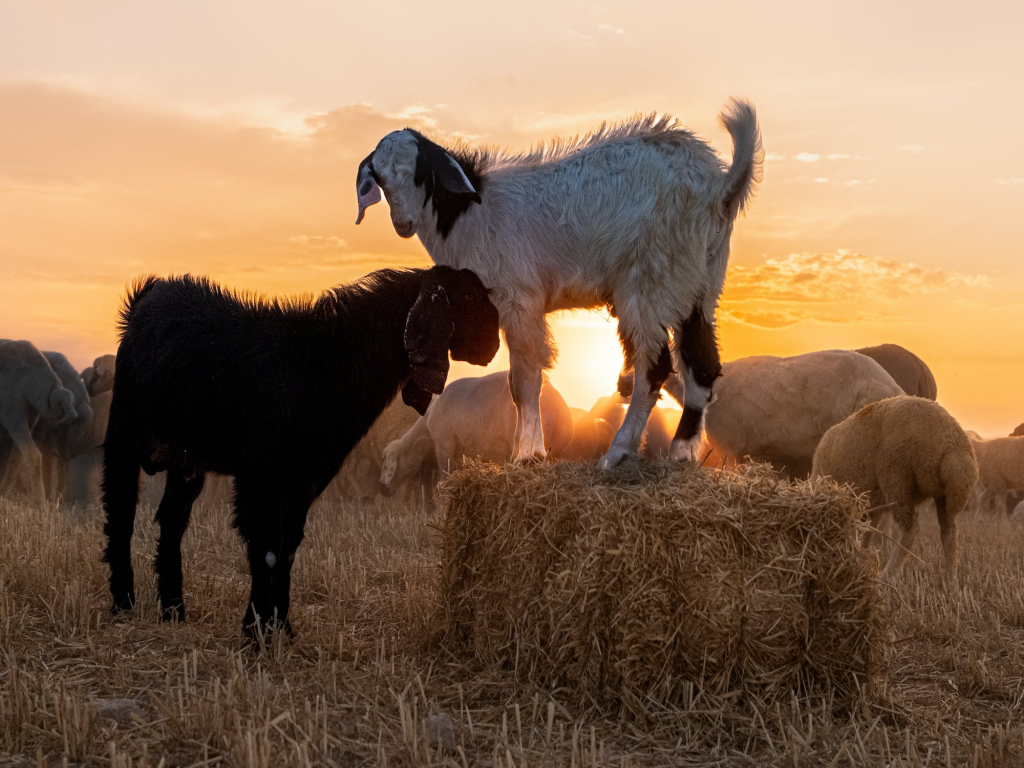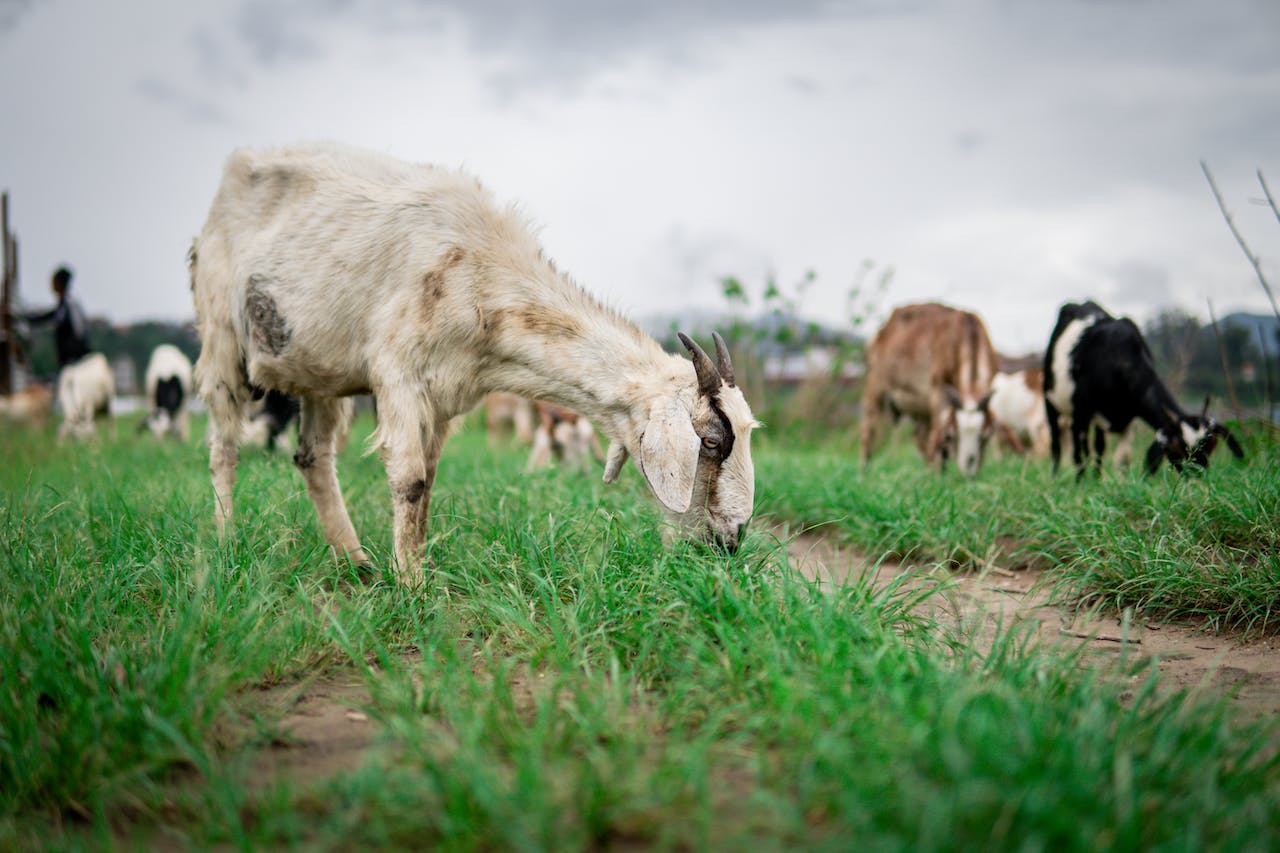Are you thinking of keeping goats for milk and cheese making? But are not quite sure about which breed is best to choose.
Don’t worry! We’ve got you sorted. In this article, we will discuss the different breeds of goats and their description and guide you in choosing the best goat breed for milk and cheese making.
1. Alpine Goats
Alpine goats are the most popular dairy goat breed known for their high milk production capacity. They are medium in size, with short hair and erect ears. They come in many different colors, with black and white being the most common.
The milk produced by Alpine goats is rich and creamy, perfect for making cheese and other dairy products.
Caring for Alpine goats requires attention to their diet, housing, and health. As ruminants, they require a diet rich in hay, fresh water, and an occasional supplement of grains. Regular access to mineral licks will also help in keeping them healthy.
Provide them with a shelter that is well-ventilated and dry to protect them from weather extremes.
Regular health check-ups are essential to avoid illnesses. Vaccinate them annually against common diseases. Grooming, hoof trimming, and deworming are also crucial for maintaining their health and productivity.

2. Saanen Goats
Saanen goats are another popular dairy goat breed, originating from Switzerland. They are medium to large-sized goats with straight ears and a gentle disposition.
Saanen goats are known for their high milk production, with a lower fat content. Their milk is best for soft cheese and yogurt.
Saanen goats require a balanced diet similar to Alpine goats, consisting of high-quality hay, fresh water, and grains.
They thrive in cooler climates and must be provided with a shaded shelter to protect them from excessive sun exposure due to their light skin color. Their docile and friendly nature makes them easy to handle, even for beginners.
Like the Alpine, Saanen goats need regular health checks, vaccinations, and hoof care to maintain their health and productivity. Because of their high milk yield and adaptability, Saanen goats are an excellent choice for dairy farmers seeking to produce milk and cheese on a large scale.
3. Nubian Goats
Nubian goats are a favorite among goat keepers because of their long, floppy ears, and sweet personality. They have a high-fat content in their milk, making it perfect for making cheese, cream, and butter. Nubian goats are medium to large-sized, with a variety of coat colors.
Nubian goats are renowned for their friendly, outgoing, and sociable nature.
Unlike many other breeds, they have a vocal disposition and are known to communicate their needs to their human caretakers through distinctive bleats.
This trait, coupled with their unique and personable character, often endears them to their owners.
However, their intelligence and curious nature can sometimes lead to mischief, such as escaping from their pens or getting into areas they shouldn’t. Proper fencing and secure housing are essential to prevent such incidents.

Despite their playful demeanor, they are also known to be docile and easy to handle, making them a suitable choice for beginners and experienced goat keepers alike.
4. Toggenburg Goats
Toggenburg goats are a smaller breed with a short, soft coat. They are known for their docile temperament and milk production, which has a lower butterfat content. Toggenburg milk is best to use in hard cheeses.
Toggenburg goats originate from the Toggenburg valley in Switzerland, giving them their distinctive name. Despite their smaller size, they are a robust and hearty breed, capable of withstanding a wide range of climates.
They are characterized by their uniform color, ranging from light fawn to dark chocolate.
Toggenburgs production is consistent, making them highly valued for dairy farming.
The lower butterfat content of their milk doesn’t affect its richness or flavor, making it an excellent choice for hard cheeses.
Toggenburgs have a friendly and gentle disposition, making them easy to handle and a joy to raise, both for commercial dairy farmers and hobbyists. Their adaptability, productivity, and docile nature make them an excellent addition to any farmstead.
5. LaMancha Goats
LaMancha goats are distinct from other goat breeds because they have tiny ears or no visible ears at all. They are small in size with short, glossy coats. They are high milk producers with a medium fat content, perfect for making cheese and yogurt.

LaMancha goats bring a unique aesthetic to any herd due to their unusual ear characteristics, described as “elf” or “gopher” ears. Despite their unique appearance, they are renowned for their excellent dairy production. Their milk is characterized by a medium fat content, making it rich and creamy, and ideal for cheese and yogurt production.
Originating in the United States, LaManchas are hardy and adapt well to a variety of climates, making them an excellent choice for diverse geographical locations.
Known for their calm and friendly temperament, these goats are easy to manage and handle. Their small size and distinctive looks, combined with their high milk yield and resilience, make them a favorite among dairy farmers and hobbyist breeders alike.
Conclusion
When it comes to choosing a goat breed for milk and cheese-making, there are some things to consider.
You should determine your purpose for keeping goats. If you want to produce a higher quantity of milk, then go for Alpine or Saanen goats that produce a large amount of milk daily.
For making cheese and butter, choose Nubian or LaMancha goats, as they produce milk rich in butterfat content. If hard cheese is your desired product, the Toggenburg breed is the best option.
Goat milk is a great source of nutrients and is an excellent alternative to cow’s milk. Choosing the right breed that suits your requirements and preferences is crucial.
Whether it’s high milk production, butterfat content in milk, or making a specific type of cheese, there is always a breed of goat that’s perfect for your needs.
We hope this article has provided valuable insights and information on goat breeds and helped you in choosing the best breed of goats for milk and cheese making.
